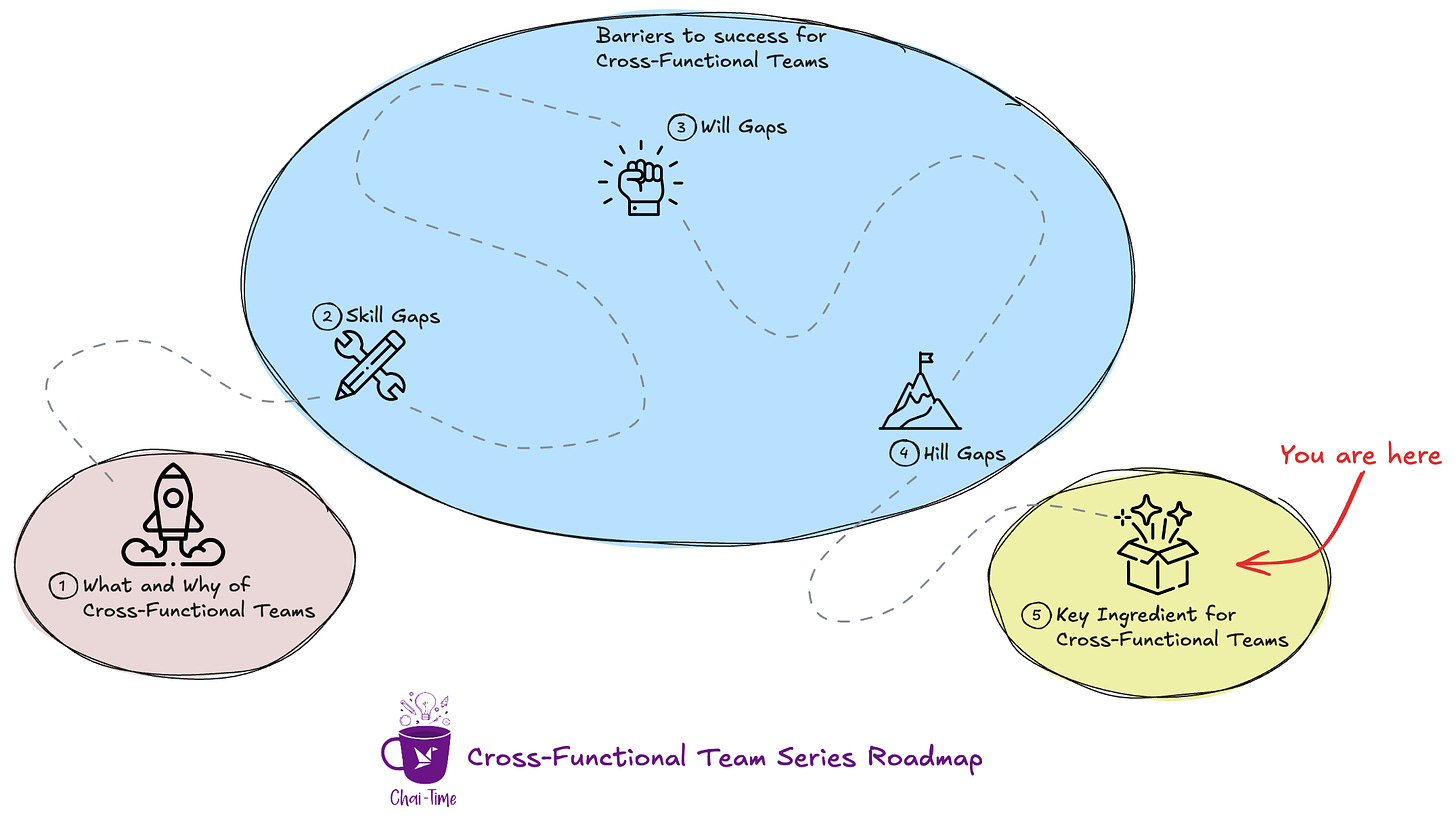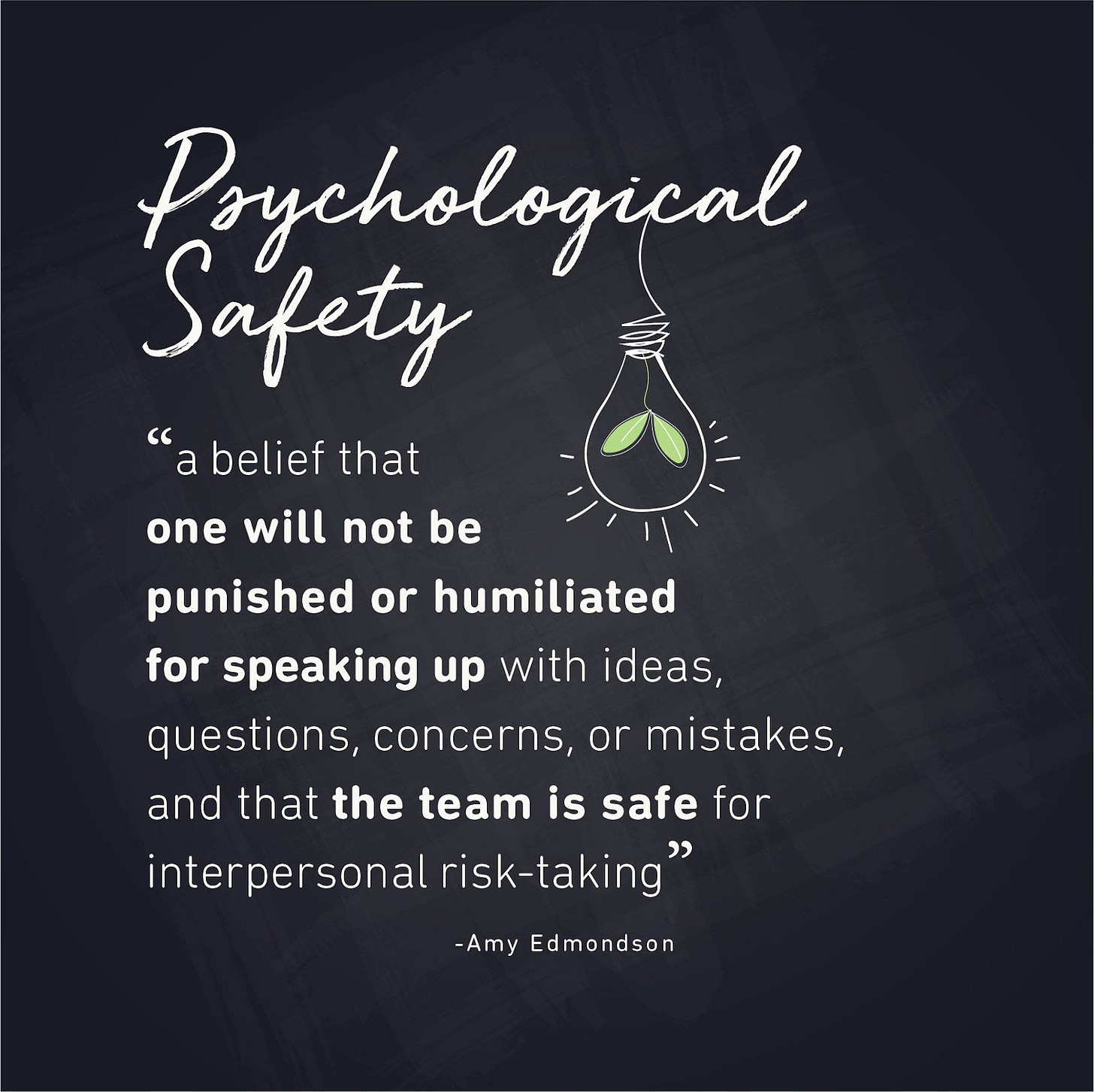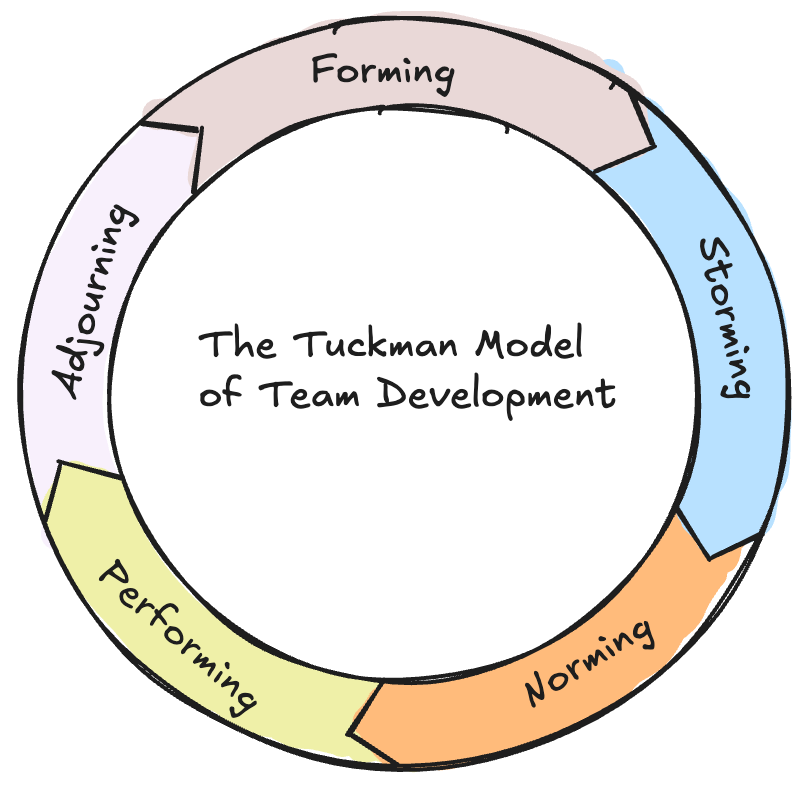The Secret Ingredient
The fifth and final post in ChaiTime's paid-subscriber series on Cross-Functional Teams (CFTs). This one deep-dives into Will Gaps that are a barrier to success for CFTs.
Welcome to the fifth and final post of this paid-subscriber series on cross-functional teams!
A quick recap of where we are:
We talked about why cross-functional teams they are becoming popular in many industries.
We looked into skill, will and hill gaps cross-functional teams could face and how to overcome them.
This might surprise you but…
I have seen cross-functional teams fail EVEN WHEN they have a well-defined purpose, a strong sponsor, excellent enablers, committed team members and a solid team structure.
So what’s missing???
Consider becoming a paid subscriber to ChaiTime today!
Paid Subscribers get access to the full post archive and in-depth, special series like this one each quarter.
Today let’s add a final ingredient to the cross-functional team success brew we’ve been making all week: Synergy
Here is the dictionary definition of Synergy:
The interaction or cooperation of two or more organizations, substances, or other agents to produce a combined effect greater than the sum of their separate effects.
Setting up a cross-functional team is an expensive endeavor so most companies are looking for a much larger return-on-investment (ROI) from cross-functional teams than traditional teams. To get this boost, in addition to all the previous ingredients we discussed, cross-functional teams also need Synergy among their team members.
Today I have two frameworks to share. I’ve seen both being highly effective in creating Synergy among team members. In fact, both would work for a traditional team as well as a cross-functional team!
Psychological Safety
Project Aristotle was Google's internal research (now published externally) to determine what makes a team effective.
The research team studied 180 teams (115 project teams in engineering and 65 pods in sales) which included a mix of high- and low-performing teams. The study tested how both team composition (e.g., personality traits, sales skills, demographics on the team) and team dynamics (e.g., what it was like to work with teammates) impact team effectiveness. The research team also conducted 200+ double-blind interviews with executives to understand what they thought drove team effectiveness. Lastly, they looked at 250+ attributes from the annual employee engagement survey to build a picture of team effectiveness.
Project Aristotle found that what really mattered was
less about who was on the team,
and more about how the team worked together.
Project Aristotle found one defining factor of highly effective teams which is also the first framework I want to introduce today - Psychological Safety.
In my study, this was also the defining factor that most of the survey respondents called out as necessary for their team’s success. I have personally experienced the difference between a psychologically safe team and one that isn’t! Cultivating Psychological Safety is necessary for both, traditional and cross-functional teams!
Dr. Amy Edmondson extensively researched the concept of psychological safety as it relates to teams. Read more about her research here. Here is how she defines this concept:
But how do we as team leads and people managers use this concept?
A simple tool used at Google was a list of 7 questions based on Dr. Edmondson’s research. Here are the 7 questions:
If you make a mistake on this team, it is often held against you.
Members of this team are able to bring up problems and tough issues.
People on this team sometimes reject others for being different.
It is safe to take a risk on this team.
It is difficult to ask other members of this team for help.
No one on this team would deliberately act in a way that undermines my efforts.
Working with members of this team, my unique skills and talents are valued and utilized.
💡Try This:
Send these questions out as an anonymous survey to your team.
The aggregated responses will tell you the level of psychological safety in your team.
“Team” is whoever you define as a team but it is best not to exceed 10-15 people.
The Tuckman Model
The Tuckman model of team development was first proposed by Bruce Tuckman in 1965. This is the second framework for Synergy that I will talk about today.
The model's basis was that teamwork isn't like a switch. You can't just press a button and expect everyone to work together. It takes time for a new team to "gel" and work to its full potential. Also, team members go through stages as they shift from strangers to co-workers.
Here are a few tips I’ve learned about team building. Again, these apply to both traditional and cross-functional teams.
1. Resist the temptation to skip the forming stage
When new teams are formed, there is a tendency to rush through or skip the Forming stage and get straight to business. This happens especially when there is time pressure. But it helps to slow down and take the time to know each other!
2. Allow time for the team to come together
You can speed up the journey through the Tuckman phases but skipping them is not possible or recommended! As a team moves through the Storming phase, things do get worse before they get better. Continuing to meet regularly and continuing to keep time for open conversations helps a team reach the Performing stage sooner.
3. Don't ignore the Adjourning phase
This one is especially important for cross-functional teams which will be disbanded at some point. Humans are symbolic creatures and adjourning is important to create a closure before moving on to the next thing. The best Adjournments I have seen are when teams come together for a last hurrah and share a meal together (happy hour, dinner, etc.) or share 1-2 core memories of their time together.
And that’s a wrap for our cross-functional team series!
Thanks for being a ChaiTime paid subscriber! Your subscription motivates me to work on series like these.
I’d love to get your feedback. Drop me a comment or message me to tell me what was your favorite part of this series or what you’d have liked to see here!







